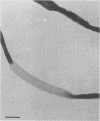Abstract
A heterotrophic bacterium, isolated from an acidic stream in a disused pyrite mine which contained copious growths of "acid streamers," displayed characteristics which differentiated it from previously described mesophilic acidophiles. The isolate was obligately acidophilic, with a pH range of 2.0 to 4.4 and an optimum pH of 3.0. The bacterium was unable to fix carbon dioxide but oxidized ferrous iron, although at a slower rate than either Thiobacillus ferrooxidans or Leptospirillum ferrooxidans. Elemental sulfur and manganese(II) were not oxidized. In liquid media, the isolate produced macroscopic streamerlike growths. Microscopic examination revealed that the bacterium formed long (greater than 100 microns) filaments which tended to disintegrate during later growth stages, producing single, motile cells and small filaments. The isolate did not appear to utilize the energy from ferrous iron oxidation. Both iron (ferrous or ferric) and an organic substrate were necessary to promote growth. The isolate displayed a lower tolerance to heavy metals than other iron-oxidizing acidophiles, and growth was inhibited by exposure to light. There was evidence of extracellular sheath production by the isolate. In this and some other respects, the isolate resembles members of the Sphaerotilus-Leptothrix group of filamentous bacteria. The guanine-plus-cytosine content of the isolate was 62 mol%, which is less than that recorded for Sphaerotilus-Leptothrix spp. and greater than those of L. ferrooxidans and most T. ferrooxidans isolates.
Full text
PDF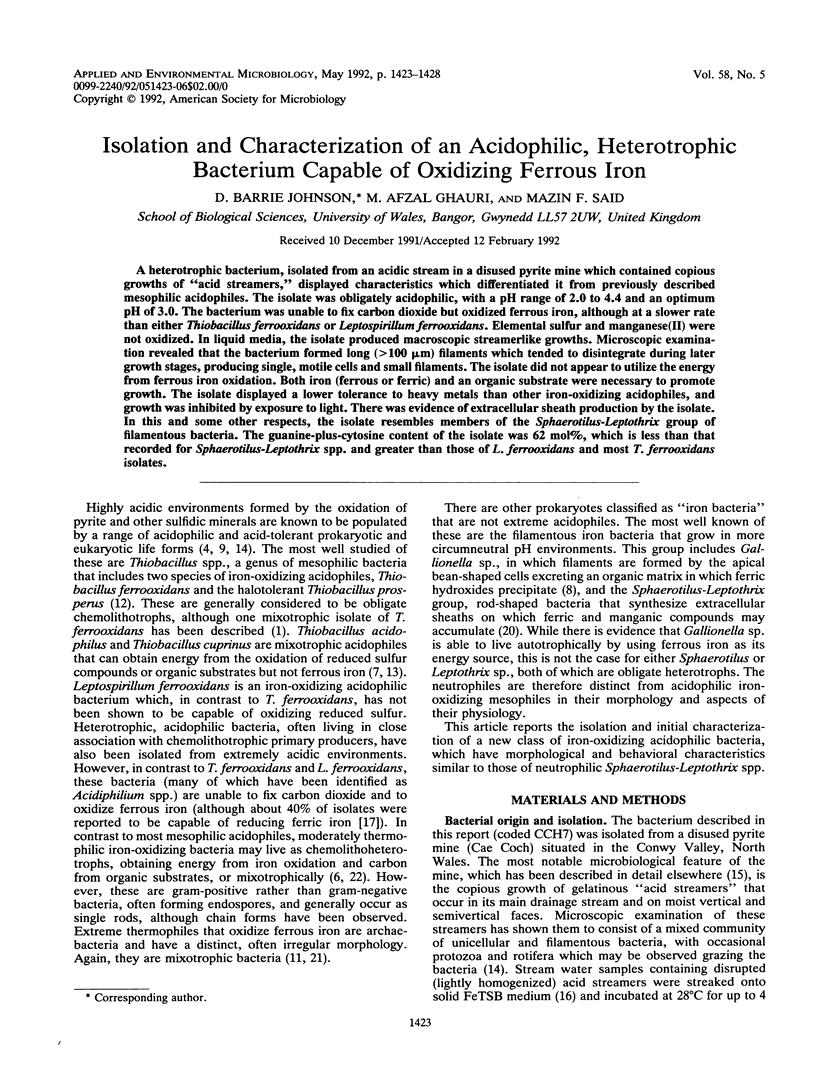
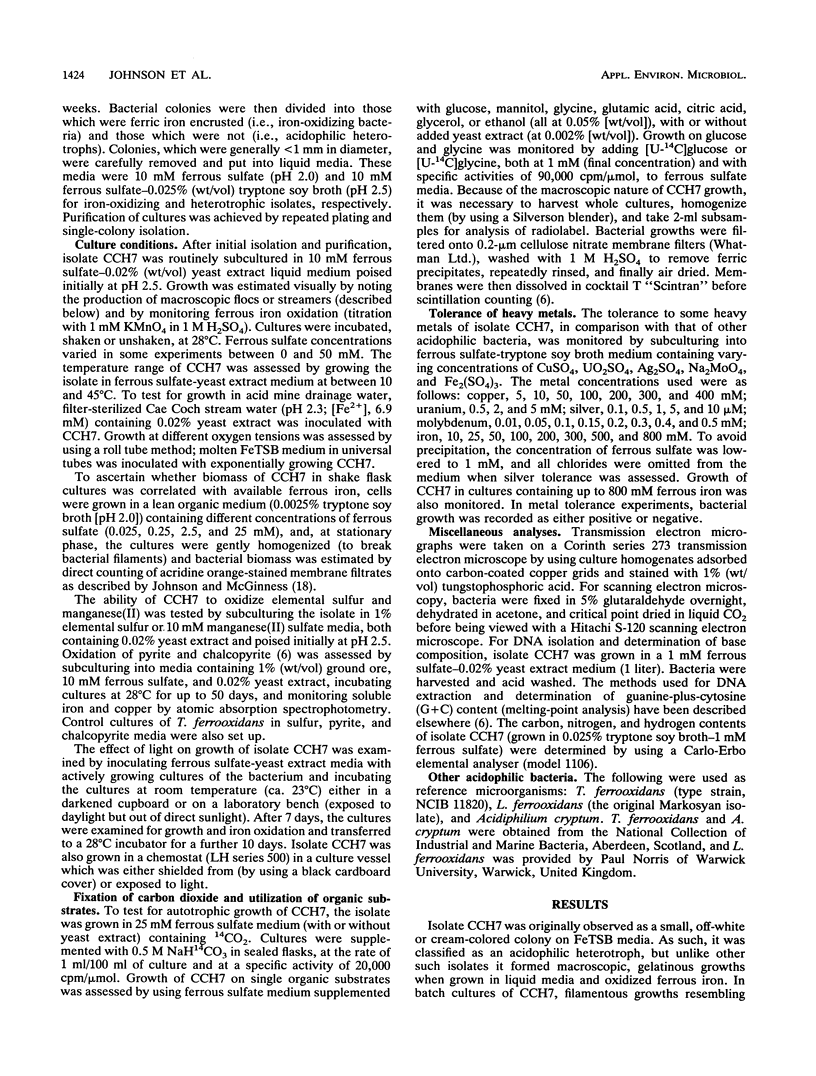
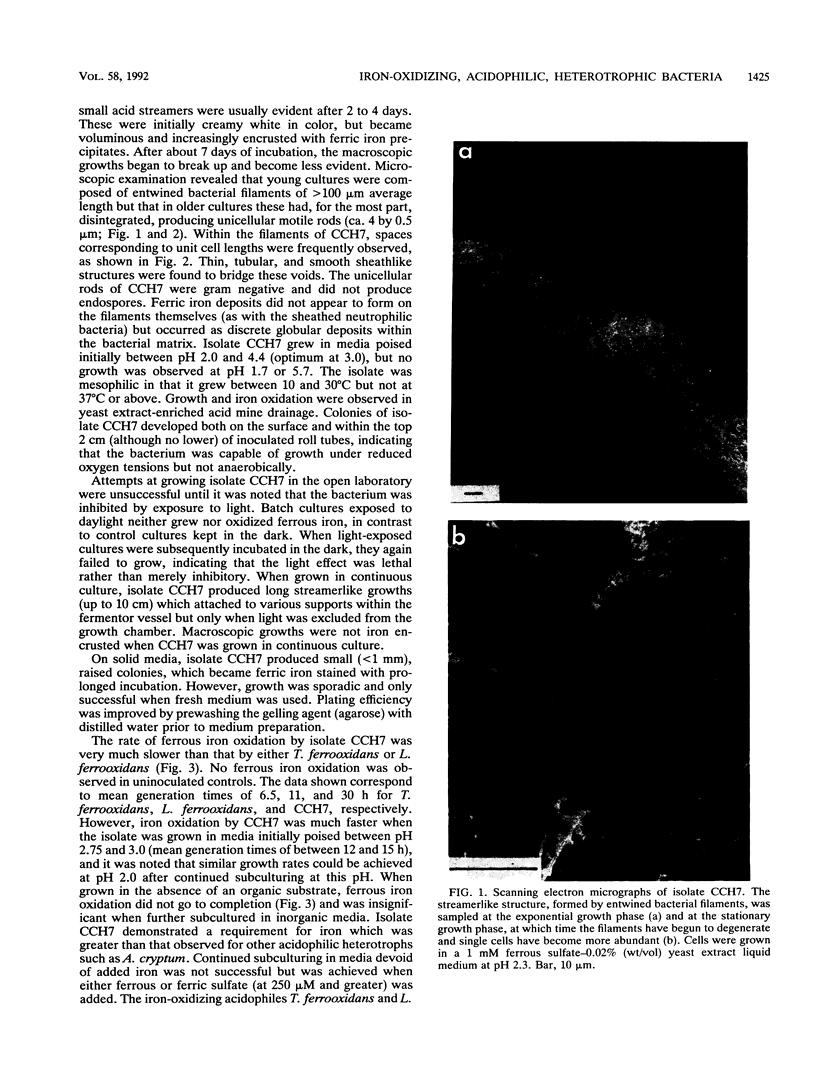
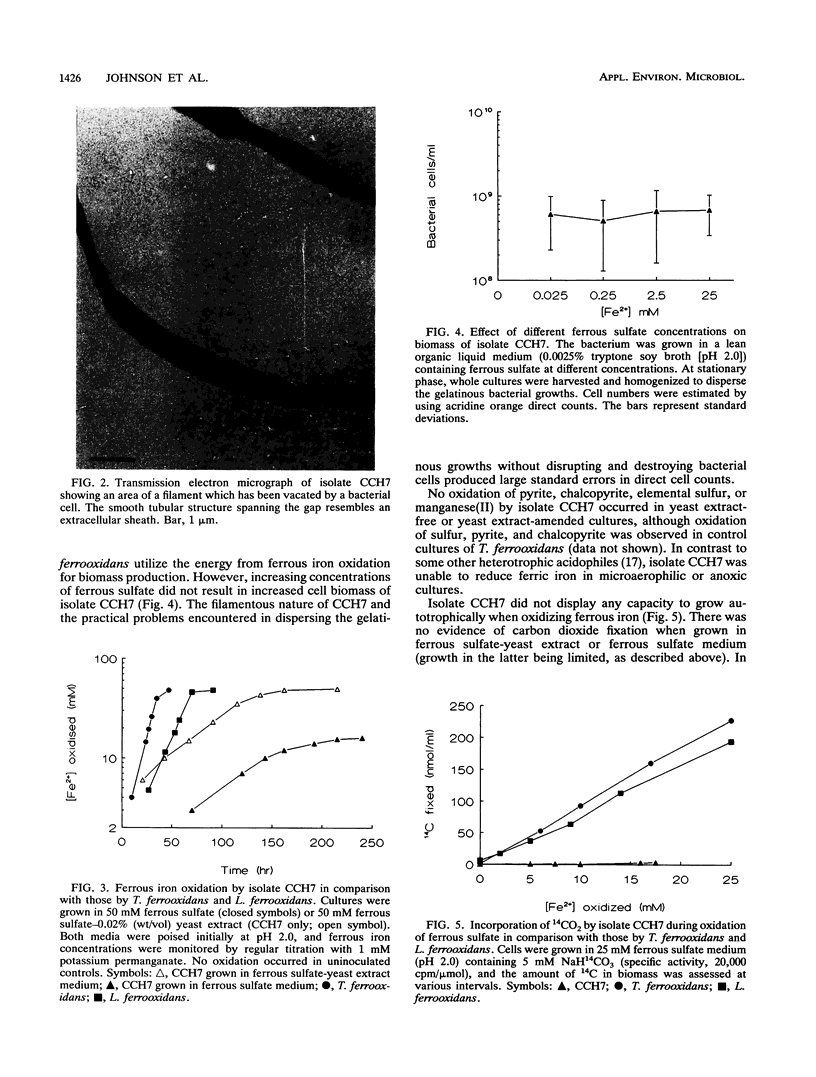
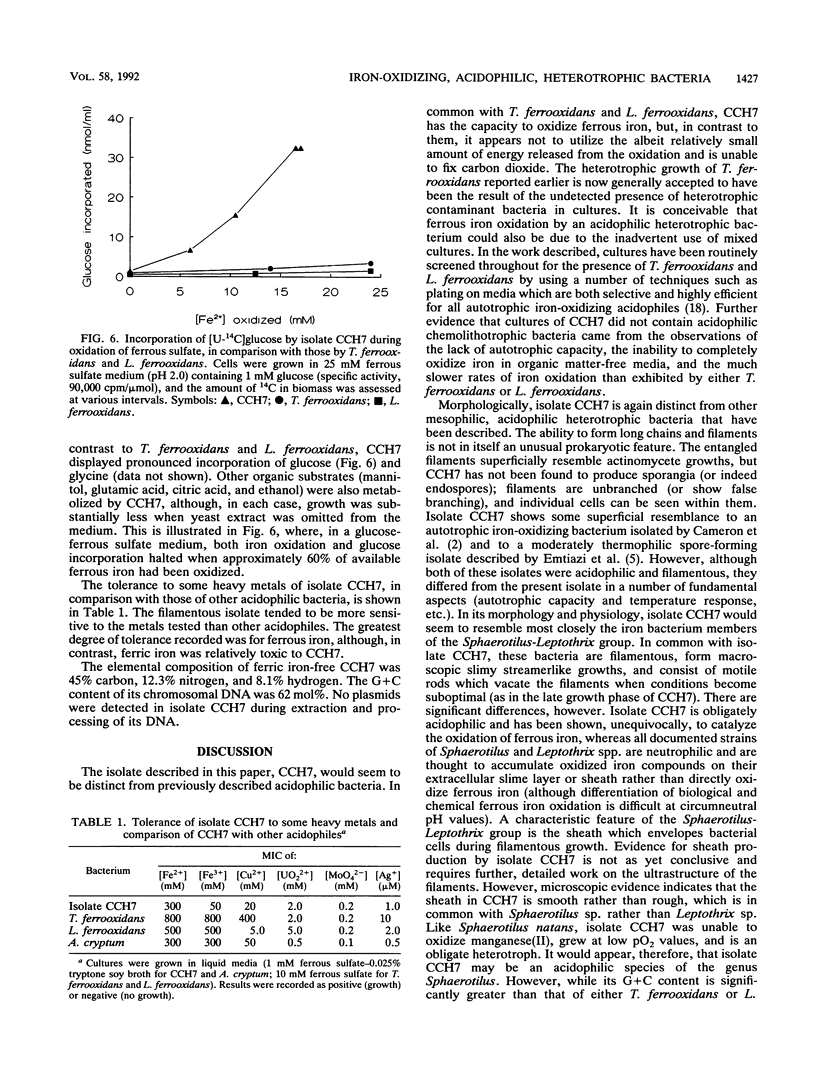
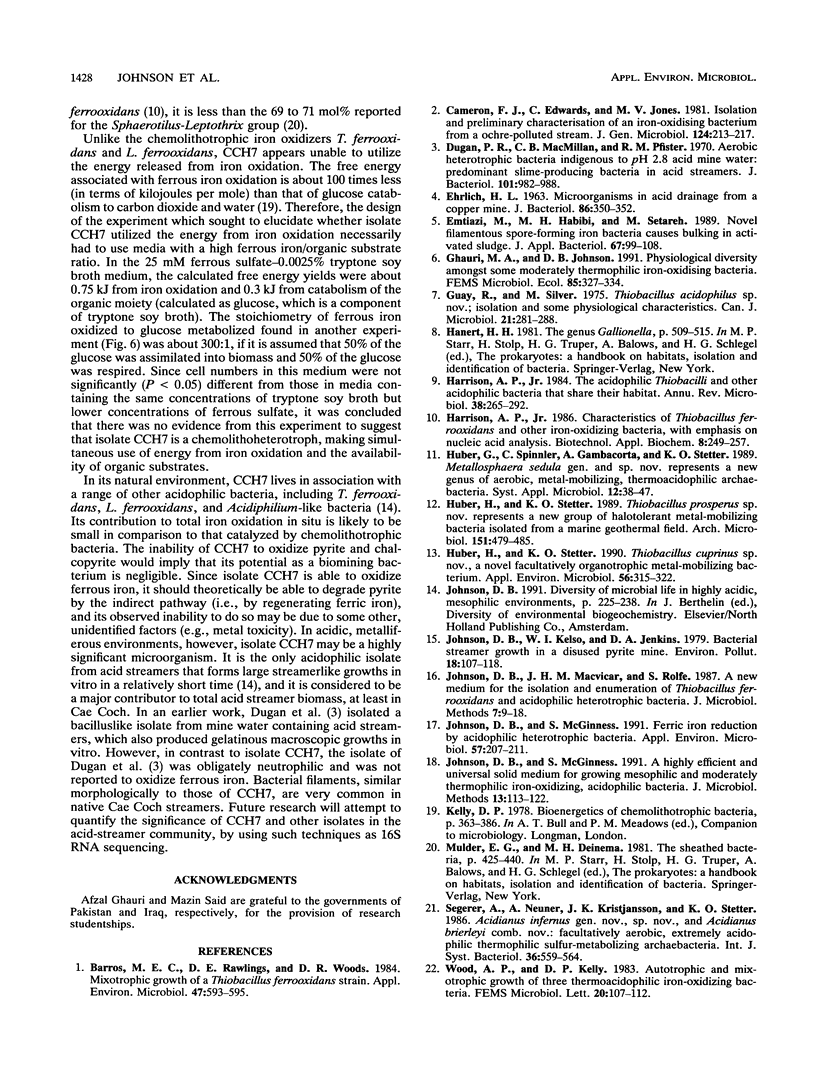
Images in this article
Selected References
These references are in PubMed. This may not be the complete list of references from this article.
- Barros M. E., Rawlings D. E., Woods D. R. Mixotrophic Growth of a Thiobacillus ferrooxidans Strain. Appl Environ Microbiol. 1984 Mar;47(3):593–595. doi: 10.1128/aem.47.3.593-595.1984. [DOI] [PMC free article] [PubMed] [Google Scholar]
- Dugan P. R., MacMillan C. B., Pfister R. M. Aerobic heterotrophic bacteria indigenous to pH 2.8 acid mine water: predominant slime-producing bacteria in acid streamers. J Bacteriol. 1970 Mar;101(3):982–988. doi: 10.1128/jb.101.3.982-988.1970. [DOI] [PMC free article] [PubMed] [Google Scholar]
- EHRLICH H. L. MICROORGANISMS IN ACID DRAINAGE FROM A COPPER MINE. J Bacteriol. 1963 Aug;86:350–352. doi: 10.1128/jb.86.2.350-352.1963. [DOI] [PMC free article] [PubMed] [Google Scholar]
- Guay R., Silver M. Thiobacillus acidophilus sp. nov.; isolation and some physiological characteristics. Can J Microbiol. 1975 Mar;21(3):281–288. doi: 10.1139/m75-040. [DOI] [PubMed] [Google Scholar]
- Harrison A. P., Jr The acidophilic thiobacilli and other acidophilic bacteria that share their habitat. Annu Rev Microbiol. 1984;38:265–292. doi: 10.1146/annurev.mi.38.100184.001405. [DOI] [PubMed] [Google Scholar]
- Huber H., Stetter K. O. Thiobacillus cuprinus sp. nov., a Novel Facultatively Organotrophic Metal-Mobilizing Bacterium. Appl Environ Microbiol. 1990 Feb;56(2):315–322. doi: 10.1128/aem.56.2.315-322.1990. [DOI] [PMC free article] [PubMed] [Google Scholar]
- Johnson D. B., McGinness S. Ferric iron reduction by acidophilic heterotrophic bacteria. Appl Environ Microbiol. 1991 Jan;57(1):207–211. doi: 10.1128/aem.57.1.207-211.1991. [DOI] [PMC free article] [PubMed] [Google Scholar]




